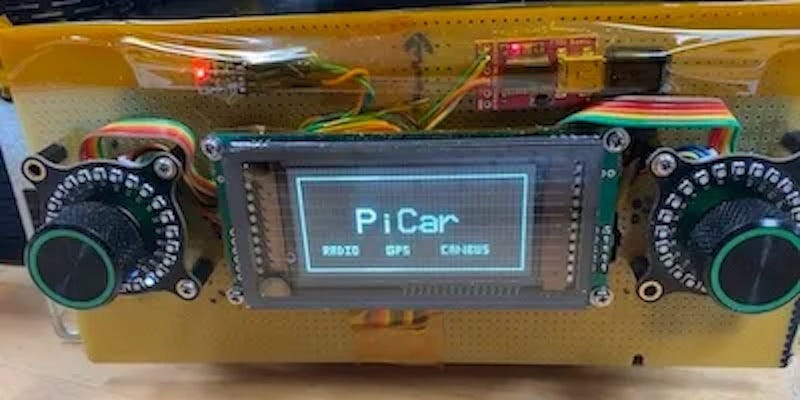PiCar - Raspberry Pi Car Radio Project - Part 1
Why would anyone sane do this?
The Raspberry Pi platform has allowed me to rediscover how much fun it is to create home-brew computer projects. I started off as a home-brew computer hacker back in the 70s. Then as what happens so often, I became a professional and had little left over for my own creations. About two years ago I started building my own computer projects when I wanted to automate the door to our chicken coop. My first attempt was used the Arduino platform. Later I revisited the project with a the Raspberry Pi. Along the way, I did all kinds of crazy stuff like automating my well pump and backup power system.
At one point I came across Software Defined Radio and built a device to monitor local air traffic. I was was absolutely floored at how versatile these devices are. I discovered that using an inexpensive RTL-SDR device and a modest single board computer like a Raspberry Pi Zero you could monitor everything from broadcast radio, to tire pressure sensors, Utility meters, remote controls for cars.
In addition to radio I spent some time hacking the CAN network in my car, and wrote a number of articles about it. It was not difficult to decode most of the data traffic in the vehicle and monitor status. In the process, I put together a simple tool to assist my reverse engineering called canhacker.
But, You know what would be cool..?
It occurred to me that since I can see all this data, how cool it would be to build a device to that would replace the stupid engine check light with something that could decode and display the automotive DTC codes.
Better yet, What if we combined engine monitor into a car radio.
Yes I have seen a few projects like OpenAuto that do a great job of integrating all those things. But where is the fun in building someone else’s project. And.. well my experience in privacy software development make me suspicious of code or hardware that I haven’t reviewed, especially when it’s running on my vehicle.
In addition I wanted to shy away from the usual OLED monitors that are so common in most modern cars and go for a look that was a bit more retro and appropriate for my 2010 Gen IV LS Jeep Wrangler project. Which by the way in addition to the Chrysler CAN network also runs GMLAN.
Incidentally, since I spend some time in local Sheriff’s Office Search and Rescue teams, it would be very useful if I had an a VHF scanner and GPS receiver integrated into the radio.
Given the power of the Raspberry Pi 4 platform, and that I have made quite a bit of headway in the various components needed to build such a system. I would seem that putting all of this together seems like a very reasonable project.
So putting together a shopping list. I wanted to build a project that would have the following components and functions.
VFD display to match the existing decor.
Simple user interface, maybe just two knobs.
Radio based on RTL-SDR software radio.
4 speaker audio (I am to old to care about subwoofers)
Allow me to play audio from my iPhone
Access to Jeep and GM CAN networks.
GPS receiver.
External temperature sensor
Power management (don’t drain my battery)
A clock that I don’t have to keep setting.
And all this needs to fit in the same form factor as the stock Jeep radio, and be rugged enough to take the abuse of mountain driving.
And so the adventure begins…







Super cool! I’m looking forward to seeing the details!